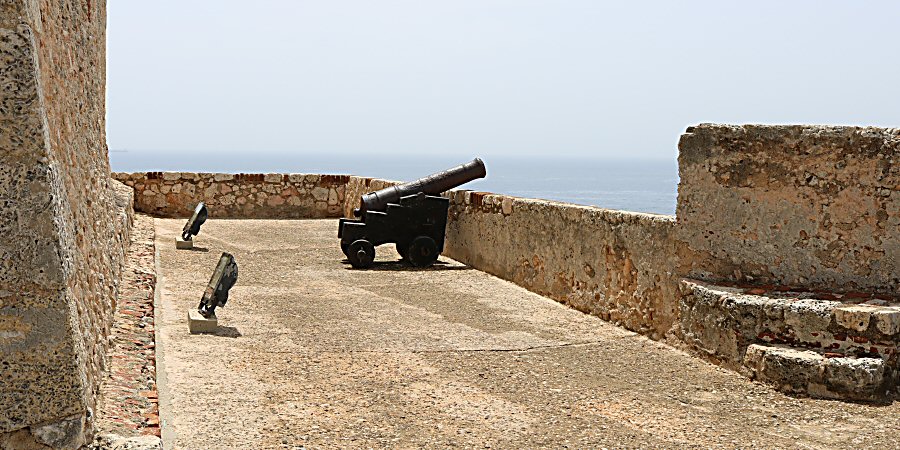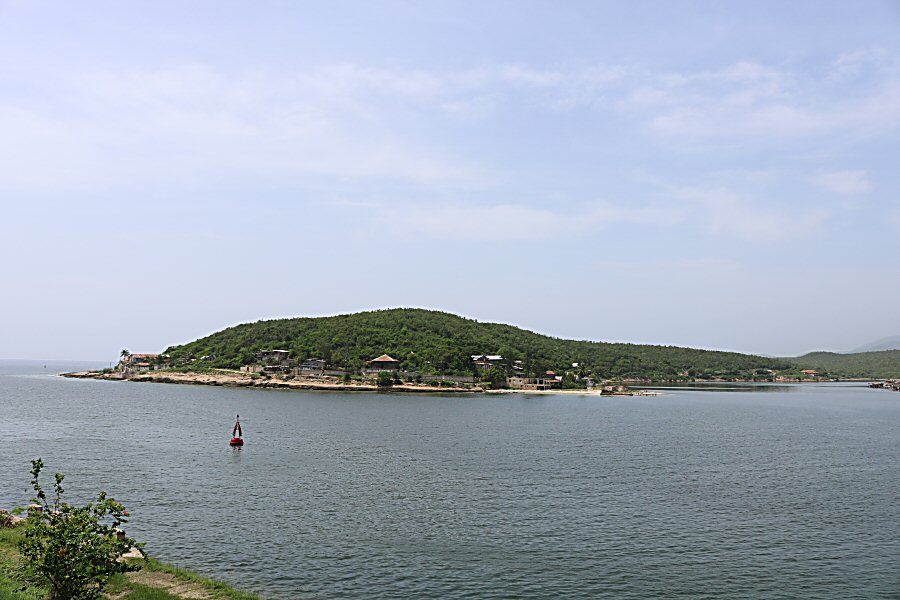Castillo del Morro is located 8 km south of the city, at the entrance of the Bahía de Santiago de Cuba (Bay of Santiago de Cuba).
daily 09:30 - 18:30


Castillo del Morro is among the
picturesque places of Santiago de Cuba. Its exceptional location
at the entrance of the Bay of Santiago de Cuba and its
adaptation to the topography of the area place the castle in a
widely recognized group of three of those fortresses, designed
by the famous architects, father and son Bautista, and Juan
Bautista Antonelli; the others are the Castillo de los Tres
Reyes in Havana and the Castillo de San Sebastián in San Juan,
Puerto Rico.
History
With the growth of the maritime
transport in the Caribbean, the aggressive political and
commercial rivalry between Spain and England increased in the
17th century, threatening the Spanish colonies, so that the
Spanish that were losing the naval supremacy day by day, came to
the decision to fortify their settlements. Until that time the
defense system of Santiago de Cuba that would protect the town
and its inhabitants against the attacks of the corsairs and the
pirates, consisted of Fort of Hernando de Soto (El Fuerte de
Hernando de Soto) that was in the area where the Balcón de
Velázquez is located today. Consequently, Castillo de El Morro
was built on the high cliffs on the promontory that narrows the
entrance of the Bay of Santiago de Cuba. The chosen place, where
the Bay of Santiago de Cuba opens to the Caribbean Sea by a
narrow channel, was the most favorable point to build a castle
to protect the city from the British invasion. It would also
function to ward off the pirates.
The construction of the stone
fortress, integrated with the existing ravelin, begun under the
direction of the famous Italian military engineer and architect
Juan Bautista Antonelli in the time of the Governor Pedro de la
Roca y Borja in 1633. Therefore, the castle was given the name
El Castillo de San Pedro de la Roca, but the people of Santiago
de Cuba espoused the name Castillo del Morro rather than its
official name, as it was more meaningful and easier to call any
by its localization (morro means nose in Spanish; synonymous
promontory). The construction of the castle in its primitive
form finished in 1638.
The castle was destructed after an
attack of the British navy in 1662. It was rebuilt in 1663 and
subsequently expanded in 1669. In the short period of the
relative tranquility between the Spanish and the British forces,
the castle suffered severe damages by the consecutive
earthquakes (1675-1679), but it was repaired and consolidated in
each time. In addition to the attacks of the British navy in
1738 and in 1740, the castle was damaged by the earthquakes in
1757 and in 1766, but the Spanish took the advantage of the
opportunity to incorporate the most recent developments in
military architecture into the rebuilding process of the castle,
like some other fortresses in Cuba (Jagua, La Cabaña, Atares and
El Principe). El Castillo de San Pedro de la Roca was the
fundamental link of the defensive system of the coast during the
colonial time, not only against the British navy, but also
against the corsairs and the pirates that plunder the Caribbean
in the 17th and the 18th centuries. However, despite its
indomitable appearance, in 1662 the English pirate Christopher
Myngs could capture the castle after discovering, to his
surprise, that it had been left unguarded. He took the control
of Santiago for 2 weeks. During this period, a part of the
castle was destroyed, and the artillery was captured. After he
left the castle, the Spanish government raised the garrison to
300 soldiers.
During the War of Independence
(1895-1898) the fortress was destined to military prison. Many
Cuban patriots were imprisoned in the cells of the castle, such
as the major generals of the Liberation Army like Bartolomé Masó, Flor
Crombet and Pedro Agustín Pérez; José Ramón Leocadio Bonachea
(general of the Liberation Army), and the intellectuals such as
Emilio Bacardí Moreau (mayor of Santiago de Cuba) and Dominga
Moncada (mother of the General Guillermón Moncada).
On 3 July 1898 the fortress witnessed
the fight between the Spanish and the US navies (Battle of
Santiago de Cuba). The battle begun in front of the castle, in
an area that extended to the Turquino peak. When the fight ended
in favor of the US navy, the fortress was occupied by the
soldiers of the US army.

